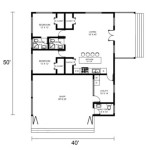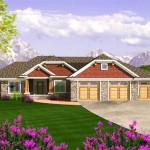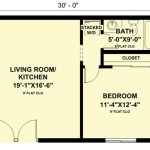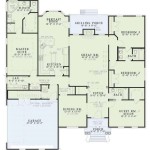House Plans Under $250k To Build: A Comprehensive Guide
The dream of homeownership remains a central aspiration for many. However, the escalating costs of construction and land acquisition often present a significant hurdle. For individuals and families seeking affordable options, exploring house plans designed to be built for under $250,000 can provide a viable pathway to realizing this dream. This article will delve into various aspects of finding and utilizing such plans, encompassing design considerations, cost-saving strategies, and factors influencing the final price.
Budgeting is paramount when embarking on a construction project. The $250,000 limit necessitates a meticulous approach to planning and design. Overly ambitious designs or extravagant features are likely to exceed this budget. Therefore, choosing a house plan that aligns with realistic financial constraints is the first and most crucial step.
Prioritizing Design and Functionality
Selecting a house plan under the $250,000 threshold requires a careful balancing act between desired features and budgetary limitations. Opting for smaller square footage is often the most direct way to reduce construction costs. Efficient use of space becomes critical in smaller homes, ensuring that every room serves a purpose and maximizes functionality. Open-concept floor plans can create a more spacious feel in a smaller footprint, combining living, dining, and kitchen areas into a single, unified space. This design approach reduces the need for interior walls, thereby lowering material and labor costs.
Single-story homes are generally less expensive to build than multi-story homes. The absence of stairs simplifies the construction process and reduces the structural requirements. Furthermore, ranch-style homes, with their simpler rooflines, often present a cost-effective option. Foundation costs are also lower for single-story structures. Conversely, building upwards can be a necessity on smaller lots, but the associated costs must be carefully considered within the budget framework. Two-story homes, while potentially offering more square footage for the price, introduce complexities in framing, plumbing, and electrical work, which can increase expenses.
The choice of building materials significantly impacts the overall cost. Standard construction materials, such as wood framing, vinyl siding, and asphalt shingles, are typically more affordable than premium options like brick, stone, or metal roofing. Energy-efficient materials, such as insulated windows and doors, while potentially adding to the initial cost, can lead to long-term savings on utility bills. Sustainable building practices, such as using recycled materials, can also contribute to cost reduction, although the availability and pricing of these materials may vary depending on the location.
Interior finishes also play a significant role in the final price. Selecting cost-effective flooring options, such as laminate or vinyl plank, can significantly reduce expenses compared to hardwood or tile. Opting for standard cabinetry and countertops, rather than custom designs, can also save money. Similarly, choosing standard fixtures and appliances, rather than high-end models, aligns with the budget. Focus should be placed on functionality and durability, prioritizing essential features over purely aesthetic considerations. A strategy of phased upgrades, wherein certain features are upgraded only after the initial construction is complete, can also be employed to manage costs more effectively.
Cost Reduction Strategies
Beyond the initial design and material selection, several strategies can be employed to reduce construction costs further. These involve careful planning, efficient execution, and a proactive approach to managing expenses.
One effective strategy is to serve as the general contractor, overseeing the project and coordinating subcontractors. This approach requires a significant time commitment and a thorough understanding of the construction process. However, it can potentially save money by eliminating the general contractor's fee. It is crucial to possess the necessary knowledge and skills to manage the project effectively, including obtaining permits, scheduling subcontractors, and ensuring quality control. Alternatively, hiring a project manager who specializes in cost-effective construction can be a viable option. Project managers can negotiate with subcontractors, manage budgets, and ensure that the project stays on track.
Another avenue for cost reduction is to perform some of the labor oneself. This can include tasks such as painting, landscaping, and installing flooring. However, it is essential to accurately assess one's skills and capabilities before undertaking any DIY projects. Incorrectly performed work can lead to costly repairs and delays. Subcontracting specialized tasks, such as electrical work and plumbing, to licensed professionals is crucial to ensure safety and compliance with building codes.
Careful negotiation with subcontractors and suppliers can also result in significant cost savings. Obtaining multiple bids from different contractors allows for comparison and selection of the most competitive pricing. Building a strong relationship with suppliers can also lead to discounts on materials. It is important to thoroughly review contracts and ensure that all terms and conditions are clearly defined. Furthermore, taking advantage of seasonal sales and promotions on building materials can contribute to cost reduction.
Value engineering is a proactive approach to cost reduction that involves identifying potential savings throughout the construction process. This can include simplifying design details, substituting materials, or optimizing construction methods. Value engineering requires a collaborative effort between the architect, contractor, and homeowner to identify areas where costs can be reduced without compromising quality or functionality.
Factors Influencing Construction Costs
Several external factors can significantly impact the final construction cost, regardless of the chosen house plan. Understanding these factors and their potential impact is essential for accurate budgeting and financial planning.
Location plays a significant role in construction costs. Land prices vary considerably depending on the location, with urban areas typically having higher land costs than rural areas. Building permit fees and local regulations also vary from municipality to municipality. Furthermore, the availability of skilled labor and the cost of transportation can influence construction expenses. Conducting thorough research on local market conditions is essential before embarking on a construction project.
Soil conditions can also impact foundation costs. Unstable soil may require additional engineering and foundation work, which can significantly increase expenses. Conducting a soil test before construction is crucial to identify any potential problems and develop appropriate solutions. Similarly, the topography of the land can affect excavation costs. Steep slopes or uneven terrain may require extensive grading, which can add to the overall cost.
The availability of utilities, such as water, sewer, and electricity, can also influence construction costs. Connecting to existing utility lines is typically less expensive than installing new infrastructure. However, in remote areas, the cost of extending utility lines can be substantial. It is important to research the availability and cost of utilities before purchasing land.
Building codes and regulations are another factor that can impact construction costs. Building codes are designed to ensure safety and quality, but they can also add to the expense of construction. It is essential to comply with all applicable building codes and obtain the necessary permits before starting construction. Furthermore, energy efficiency standards can also influence costs. Complying with these standards may require the use of more expensive materials and construction techniques.
Market fluctuations in material prices can also affect construction costs. Prices of lumber, steel, and other building materials can fluctuate significantly depending on supply and demand. It is important to monitor market trends and factor in potential price increases when budgeting for a construction project. Locking in prices with suppliers can help mitigate the risk of price increases.
Unforeseen circumstances, such as weather delays and unexpected site conditions, can also add to construction costs. It is important to have a contingency fund to cover these unexpected expenses. A contingency fund of 5-10% of the total project cost is generally recommended.
Ultimately, building a house for under $250,000 requires careful planning, realistic expectations, and a proactive approach to cost management. By prioritizing design and functionality, employing cost reduction strategies, and understanding the factors influencing construction costs, individuals and families can realize their dream of homeownership without exceeding their budget.

Est House Plans To Build Simple With Style Blog Eplans Com

How To Build A House For Under 250k Steiner Homes Nwi
Low Cost Two Y House Design 6 Double Story Homes Under 250k In Architecture

Low Cost Two Y House Design 6 Double Story Homes Under 250k In Architecture

16 Barndominium Under 250k With 60k Land Ideas In 2024 House Plans Floor

Est House Plans To Build Simple With Style Blog Eplans Com

Building On The Affordable House Plans Of 2024 Houseplans Blog Com

Modern Farmhouse Plans Custom New Homes Built On Your Land

Affordable House Plans Home Designs The Designers

Looking For A Home With Budget Of 250k Can Be Tough Learn How We Build You Custom Adair Homes Plans Open Concept








